
India–Serbia relations are foreign relations between India and Serbia. India has an embassy in Belgrade. Serbia has an embassy in New Delhi and an honorary consulate in Chennai. Both countries are key allies and were founding members of the Non Aligned Movement with Serbia being part of Socialist Federal Republic of Yugoslavia at the time. India was one of the nations that cosponsored the proposal to readmit the Federal Republic of Yugoslavia to the United Nations in 2000. India backs Serbia's position regarding Kosovo and supports Serbia's EU integration process. During her visit to Belgrade in 2013, Indian minister of state for external affairs Preneet Kaur stated that she hopes that Serbia will continue to support reforms in international bodies, including the United Nations, and India's bid to become a permanent member of the UN Security Council. In an interview for local media, H.E. Narinder Chauhan, Indian Ambassador to Serbia stated that "Despite of Breakup of Yugoslavia our political relations continue to be exceptional, marked by a long tradition of mutual support on issues of core interest... It is a matter of immense satisfaction that Serbia also supports India’s international role. India sees Serbia as a reliable partner."

North Korea–Serbia relations are the bilateral relations between Serbia and North Korea. The Socialist Federal Republic of Yugoslavia and the Democratic People's Republic of Korea had established diplomatic relations on October 30, 1948. Relations had been very close during the time of Josip Broz Tito and Kim Il Sung. Both leaders had taken a neutral stance during the Sino-Soviet split and maintained friendly relations with both the Soviet Union and China. Both Serbia and North Korea are members of the Non-Aligned Movement. Yugoslavia, of which Serbia was a part, was one of the movement's founding members. Both countries closed their embassies in each other's capitals in October and November 2001, respectively, for financial reasons. Nevertheless, they continue to enjoy a close relationship. The Serbian Embassy to North Korea is accredited from Beijing, China, and the North Korean embassy to Serbia is accredited from Bucharest, Romania.

Indonesia and Serbia established diplomatic relations in 1954, with the legal frameworks was inherited from the Yugoslavian era. Indonesia has an embassy in Belgrade and Serbia has an embassy in Jakarta. Both nations are the founders of Non Aligned Movement.

The Socialist Federal Republic of Yugoslavia was a founding member of the Non-Aligned Movement, an international groupation established to maintain independence of countries beyond Eastern and Western Bloc from the major Cold War powers. Belgrade, the capital of Yugoslavia, hosted the First Summit of the Non-Aligned Movement in September 1961 and the Ninth Summit in September 1989.
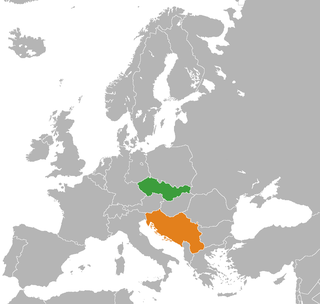
Czechoslovakia–Yugoslavia relations were historical foreign relations between Czechoslovakia and Yugoslavia, both of which are now-defunct states. Czechoslovakia and the Kingdom of Serbs, Croats and Slovenes were both created as union states of smaller Slavic ethnic groups. Both were created after the dissolution of Austria-Hungary, itself a multinational empire unable to appease its Slavic populations or implement a trialist reform in its final years.

Finland–Yugoslavia relations were historical foreign relations between Finland and now split-up Kingdom of Yugoslavia or Socialist Federal Republic of Yugoslavia. Both countries gained their independence during or in the immediate aftermath of the World War I and the collapse of Austria-Hungary (Yugoslavia) or Russian Empire (Finland). Two parties established formal bilateral relations in 1928. Two countries developed their relations after the end of the World War II and 1948 Tito–Stalin split. At the time neither one of them was a part of either Eastern or Western Bloc in the Cold War divided Europe. Both countries perceived development of relations among non-bloc neutral European states as a way to avoid isolation and preserve certain level of independence without alienating major powers. Yugoslavia however perceived that in deeply divided Europe there was shrinking maneuvering space for neutral countries and followed the development of what will be called process of Finlandization with great concern. It therefore turned its focus on new allies among former colonies and mandate territories outside of Europe where it developed its policy of equidistant active neutrality via its activities in the newly founded Non-Aligned Movement.

Indonesia–Yugoslavia relations were historical foreign relations between now split-up Socialist Federal Republic of Yugoslavia and Indonesia. Both countries were founding member states of the Non-Aligned Movement. Two countries established formal diplomatic relations in 1954. First diplomatic documents were exchanged as early as 1947. Breakup of Yugoslavia, one of the founding and core members of the Non-Aligned Movement, brought into question the very existence of the Movement which was preserved only by politically pragmatic chairmanship of Indonesia.

Afghanistan–Yugoslavia relations were historical foreign relations between Afghanistan and now split-up Socialist Federal Republic of Yugoslavia. Both countries were founding members of the Non-Aligned Movement. Afghan Prime Minister Daoud Khan represented the Kingdom of Afghanistan at the 1961 First Conference of Heads of State or Government of the Non-Aligned Movement in Belgrade.
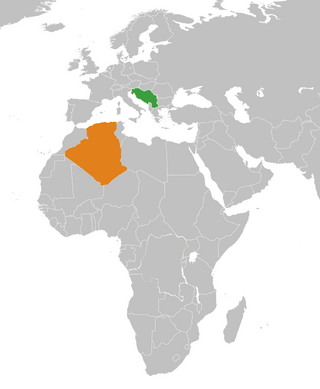
Algeria–Yugoslavia relations were historical foreign relations between Algeria and now split-up Socialist Federal Republic of Yugoslavia. Both countries self-identified with the wider Mediterranean region and shared membership in the Non-Aligned Movement. During the Algerian War Yugoslavia provided significant logistical and diplomatic support to the Algerian side which affected its intra-European relations with France. Yugoslavia was the first European country to openly support the FLN.
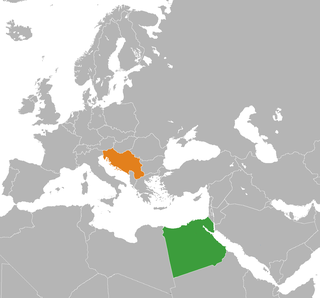
Egypt–Yugoslavia relations were historical foreign relations between Egypt and now break-up Yugoslavia. Both countries were founding members and prominent participants of the Non-Aligned Movement. While initially marginal, relations between the two Mediterranean countries developed significantly in the aftermath of the Soviet-Yugoslav split of 1948 and the Egyptian revolution of 1952. Belgrade hosted the Non-Aligned movement's first conference for which preparatory meeting took place in Cairo, while Cairo hosted the second conference. While critical of certain aspects of the Camp David Accords Yugoslavia remained major advocate for Egyptian realist approach within the movement, and strongly opposed harsh criticism of Cairo or proposals which questioned country's place within the movement.

India–Yugoslavia relations were historical foreign relations between India and now split-up Socialist Federal Republic of Yugoslavia. Yugoslavia established full diplomatic relations with India on 5 December 1948 following the 1948 Tito–Stalin split. Initially two countries developed their relations at the UN Security Council in 1949 during their shared membership. In the period of the Cold War both countries were the founders and among core members of the Non-Aligned Movement.

Ethiopia–Yugoslavia relations were historical foreign relations between Ethiopia and now split-up Socialist Federal Republic of Yugoslavia. Both countries were among founding members of the Non-Aligned Movement. The first contacts between the two countries were established at the United Nations in 1947 where Yugoslavia supported Ethiopian claims on Eritrea while Ethiopia supported Yugoslav claims over the Free Territory of Trieste. After the 1948, Tito-Stalin split Yugoslavia turned towards the non-bloc countries and two countries opened their embassies in 1955. The formal diplomatic relations were established already in 1952. Emperor Haile Selassie was the first African head of state in official visit to Yugoslavia in 1954.

Norway–Yugoslavia relations were historical foreign relations between Norway and now split-up Yugoslavia.

Morocco–Yugoslavia relations were historical foreign relations between Morocco and now split-up Socialist Federal Republic of Yugoslavia. Two countries established formal bilateral relations on 2 March 1957. Both countries were founding members of the Non-Aligned Movement. Moroccan king Hassan II supported Yugoslav bid to host the first conference of the movement in 1961 even over the candidacy of Cairo. The belief was that Yugoslav bid will “increase the possibility of wider Arab participation” irrespective of some internal divisions. Yugoslav diplomacy on its part gave high priority to country's relations with non-bloc Mediterranean countries.

Vietnam–Yugoslavia relations were historical foreign relations between Vietnam and now split-up Socialist Federal Republic of Yugoslavia. Two countries established formal bilateral relations in 1957. Relations were predominantly positive due to positive public image of Vietnam in Yugoslavia which was result of Vietnamese resistance to foreign domination and shared membership in the Non-Aligned Movement.

Mongolia–Yugoslavia relations were historical foreign relations between Mongolian People's Republic and now split-up Socialist Federal Republic of Yugoslavia. Formal bilateral relations between Mongolia and Yugoslavia were established on 20 November 1956. This was the period of normalization of Yugoslav relations with other Eastern Bloc countries which were either suspended or significantly strained after the 1948 Tito-Stalin split.

Iran–Yugoslavia relations were historical foreign relations between Iran and now split-up Socialist Federal Republic of Yugoslavia.
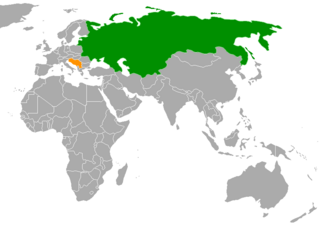
Soviet Union–Yugoslavia relations were historical foreign relations between Soviet Union and Yugoslavia. Both states became defunct with the dissolution of the Soviet Union between 1988 and 1991 and the breakup of Yugoslavia between 1991 and 1992. Relations between the two countries developed very ambiguously. Until 1940 they were openly hostile, in 1948 they deteriorated again and in 1949 were completely broken. In 1953–1955 period, bilateral relations were restored with the signing of Belgrade declaration, but until the collapse of Yugoslavia they remained very restrained. Relations with Soviet Union were of high priority for Belgrade as those relations or their absence helped the country to develop the principle of Cold War equal-distance on which the Yugoslav non-alignment policy was based.

Iraq–Yugoslavia relations were historical foreign relations between Iraq and the former Yugoslavia. Iraq established diplomatic relations with the Socialist Federal Republic of Yugoslavia in 1958. Josip Broz Tito visited Iraq in August 1967 and again in February 1979.
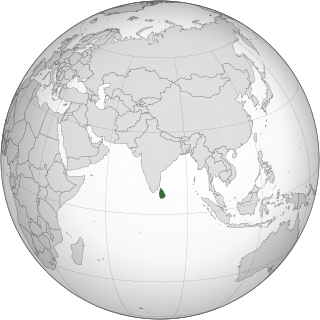
Sri Lanka–Yugoslavia relations were historical foreign relations between Sri Lanka and now split-up Socialist Federal Republic of Yugoslavia. In the period of the Cold War both countries were the founders and among core members of the Non-Aligned Movement. Diplomatic relations were established on 14 October 1957.








































